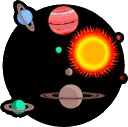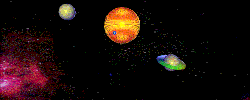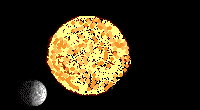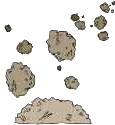 |
THE SOLAR SYSTEM |
 |
THE SOLAR SYSTEM |
| AN INTRODUCTION... |
| In our solar system, nine planets circle around our Sun. |
 |
 |
 |
 |
 |
 |
 |
 |
 |
|
|
|
|
|
|
|
|
|
|
| The Sun sits in the
middle while the planets travel in circular paths (called orbits) around
it.
These nine planets travel in the same direction (counter- clockwise). |
 |
 |
The Sun is the heaviest, largest, and hottest body in the Solar System. |
| The solar system is made up of two parts: |
|
|
| The inner planets are separated from the outer planets by the Asteroid Belt |  |
|
|
|
|
|
|
|
|
|
|
| Each of the nine planets has two ways of moving. |
|
| The time it takes for a planet to rotate is known as a "day". Since the Earth spins on its axis every 24 hours, OUR day is 24 hours long. A day on Jupiter is the shortest - a little less than 10 hours. However, the planet Venus travels very slowly. One day on Venus would last for 243 of our Earth days! |
 |
|
| The time needed for a planet to make one trip around the Sun is called a "year". You know that a year on Earth is about 365 and one-fourth days. Since Pluto's orbit is so far from the Sun, its year lasts for 247 of our years. |
 |
|
|
| Besides the planets, there are countless smaller bodies that are part of our Solar System. |
|
|
|
 |
|
 |